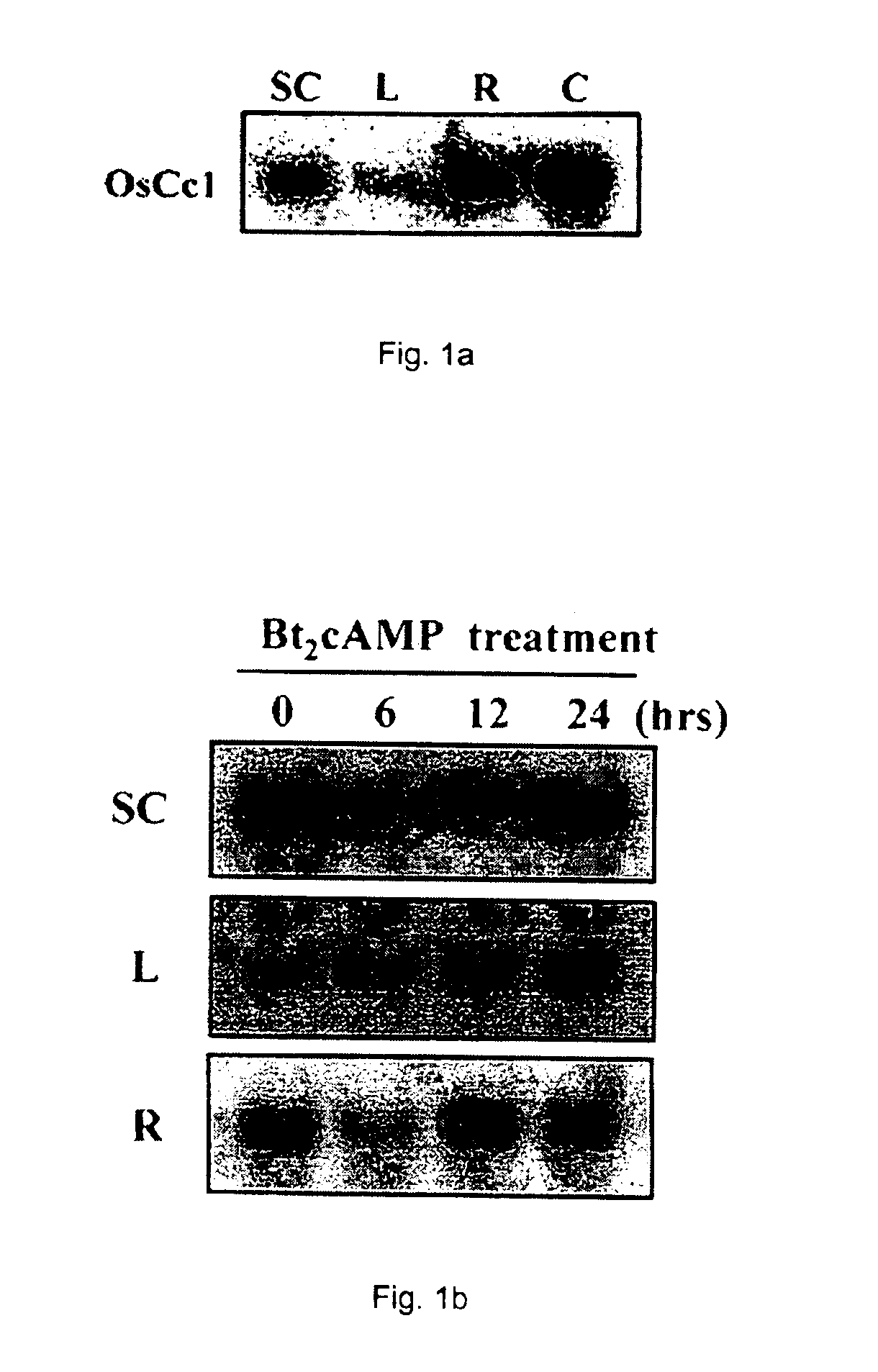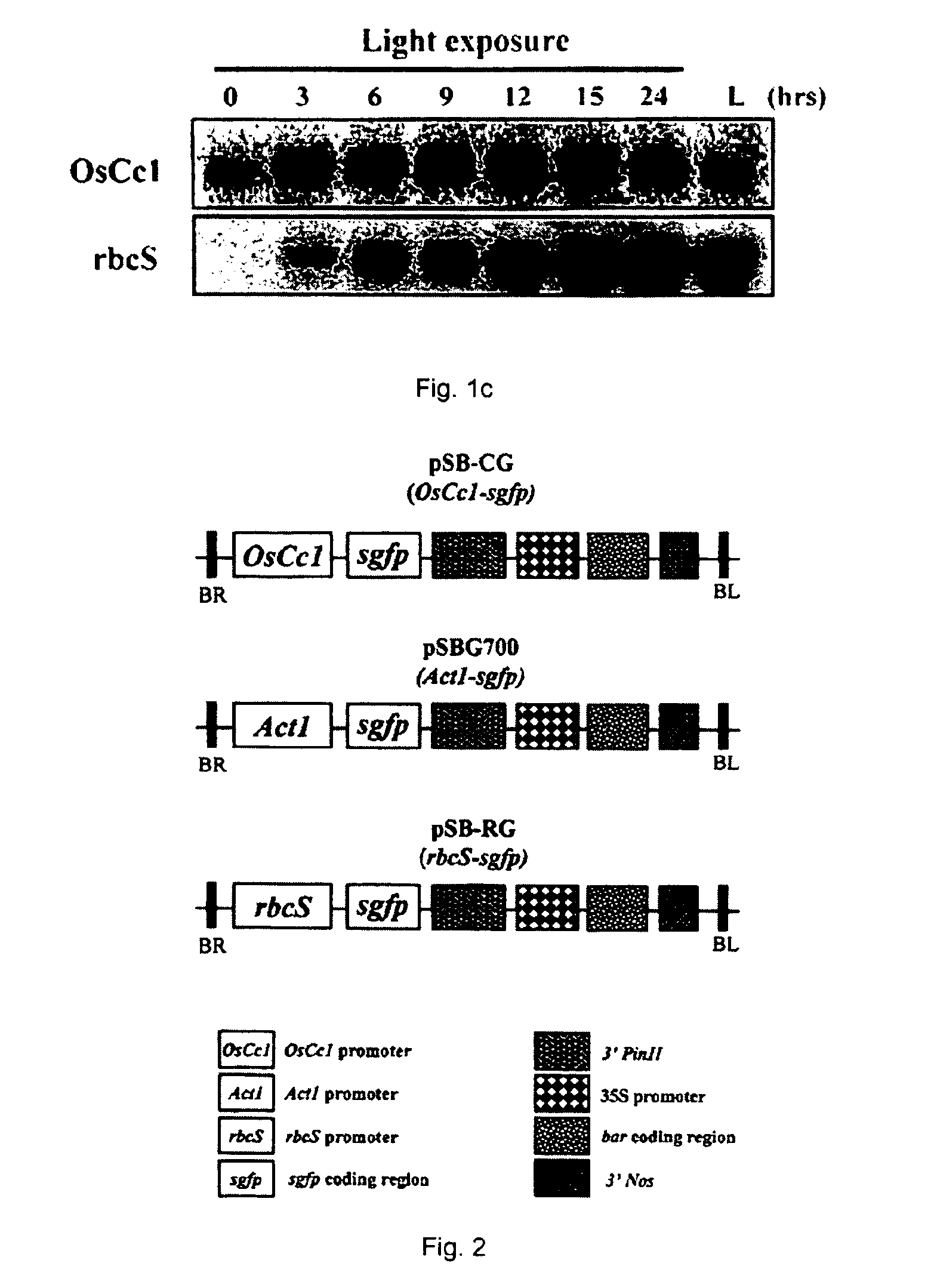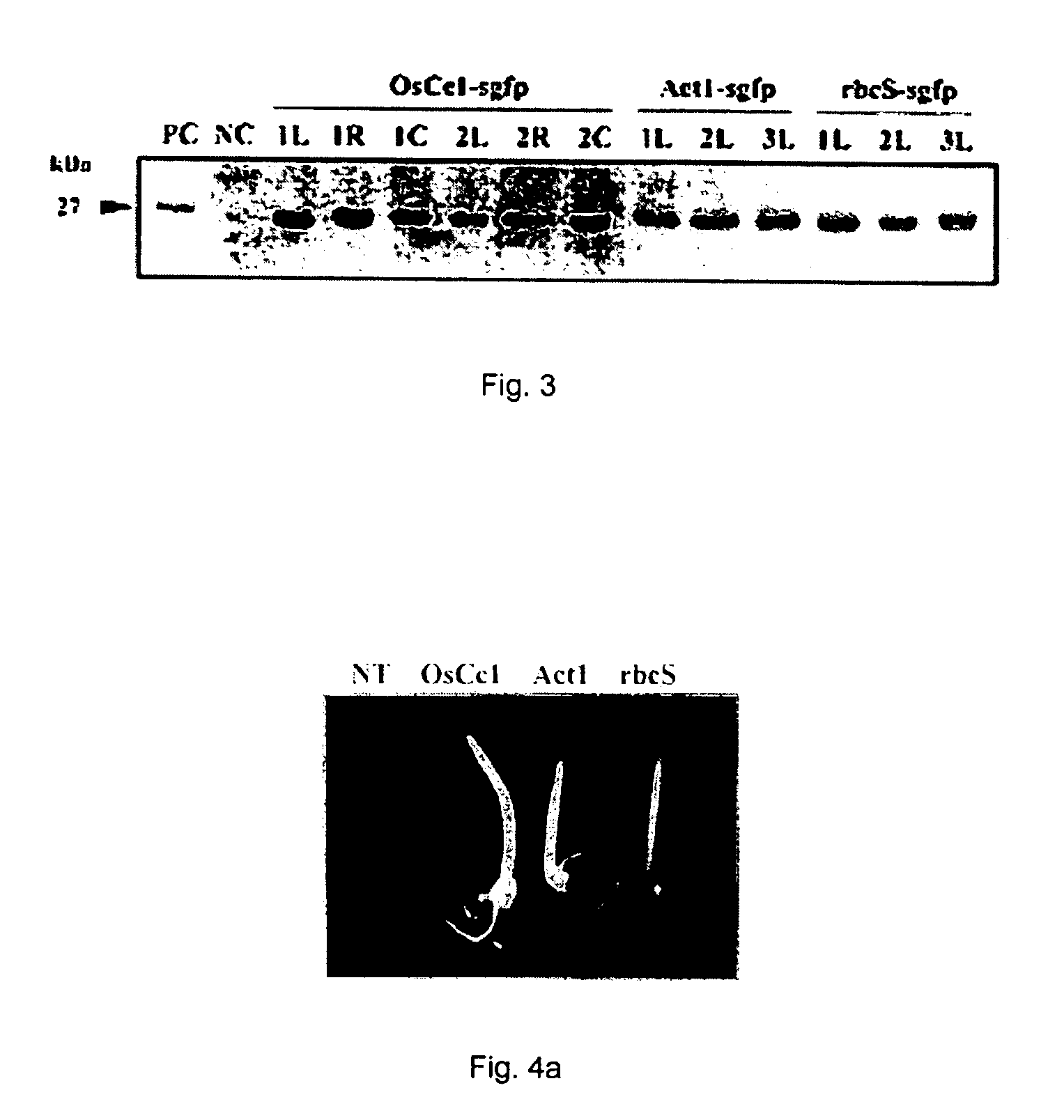OsCc1 promoter and methods of transforming monocot plants using the same
a technology of promoter and monocot plant, which is applied in the field of process for varying a trait of monocot plants, can solve the problems of limited use of promoters for monocot plants, and achieve the effect of effective use for transformation
- Summary
- Abstract
- Description
- Claims
- Application Information
AI Technical Summary
Benefits of technology
Problems solved by technology
Method used
Image
Examples
example 1
Expression Pattern of OsCc1 gene
[0021]In order to investigate the expression pattern of OsCc1 gene, a total RNA was extracted from the respective tissues and cells of a rice plant by guanidinium / LiCl method and then subjected to Nothern blot analysis. First, embryogenic calli of a rice plant were obtained from embryo of mature Oryza sativa L. (cv Nakdong) and then maintained in MS solid medium, pH 5.8, containing 1% (w / v) agarose, 30 g / L sucrose and 2.5 mg / L 2,4-D. Said embryogenic calli were incubated in AA liquid medium containing 30 g / L sucrose, 2.0 mg / L 2,4-D and 0.2 mg / L kinetin using a shaking incubator at 120 rpm and in the dark at 26 to obtain suspension cultured cells. Rice plants, suspension cultured cells and calli, with or without treatment by 1 mM dibutyl cAMP (Bt2cAMP, Sigma, USA) or by light, were frozen in liquid nitrogen. About 0.1 g of leaves, roots, calli and young seedlings were homogenized in 1 ml of extraction buffer solution containing 4 M guanidinium isothioc...
example 2
Construction of Plasmid
[0023]Plasmids containing promoter of OsCc1, Act1 or Ubi1 and sgfp gene coding for transformed green fluorescent protein were constructed. 1.8 kb of OsCc1 promoter (SEQ. ID. No. 1) was PCR amplified from pOsCc1 (see, Kemmerer EC. et al., Mol. Biol. Evol., 8:212-226, 1991) using the following two primers a and b containing XhoI or NcoI restriction site (indicated by underline):
[0024]
5′-AACTGGAGGAATTCGGATCTTCGAAGGTAGGC-3′;primer a (SEQ. ID. No. 2) and5′-AACCATGGCCGCCGCCGCCGCGAGAACG-3′; primer b(SEQ. ID. No. 3).
[0025]The amplified DNA was digested with XhoI and NcoI and then ligated to pBluescript KSII (see, Chiu W-L, et al., Curr. Biol., 6:325-330, 1996) containing sgfp gene digested with the same restriction enzymes to construct plasmid pKSCG. Thereafter, the 2.5-kb DNA fragment containing the OsCc1-sgfp was obtained by digestion of pKSCG with XhoI and NotI, and ligated to pSB 105 (see, Jang, I-C. et al., Mol. Breeding, 5:453-461, 1999) digested with the same r...
example 3
Stability of Transgene in a Rice Plant Produced by Agrobacterium—Mediated Transformation
[0027]To about 200 non-trashed grains (Oryza sativa L. cv Nakdong) was added 70% (v / v) ethanol and slightly mixed for one minute to sterilize the grains. Next, ethanol was discarded and the residual grains were slightly mixed with 100 ml of 20% (v / v) CLOROX for one hour to further sterilize the grains, which were then washed several times with sterilized water. In order to transform a rice plant, callus induction, co-cultivation with Agrobacterium containing the plasmid as prepared in the above example and selection of transformed callus were conducted according to the method described by Jang, et al. (see, Jang, I-C. et al., Mol. Breeding, 5:453-461, 1999). The rice plant transformed by Agrobacterium-mediated method was grown in a greenhouse to select only the rice plant having a resistance to herbicide. By Southern blot analysis of the genome of the transgenic rice plant as transformed and sele...
PUM
| Property | Measurement | Unit |
|---|---|---|
| volume | aaaaa | aaaaa |
| pH | aaaaa | aaaaa |
| pH | aaaaa | aaaaa |
Abstract
Description
Claims
Application Information
 Login to View More
Login to View More - R&D
- Intellectual Property
- Life Sciences
- Materials
- Tech Scout
- Unparalleled Data Quality
- Higher Quality Content
- 60% Fewer Hallucinations
Browse by: Latest US Patents, China's latest patents, Technical Efficacy Thesaurus, Application Domain, Technology Topic, Popular Technical Reports.
© 2025 PatSnap. All rights reserved.Legal|Privacy policy|Modern Slavery Act Transparency Statement|Sitemap|About US| Contact US: help@patsnap.com



